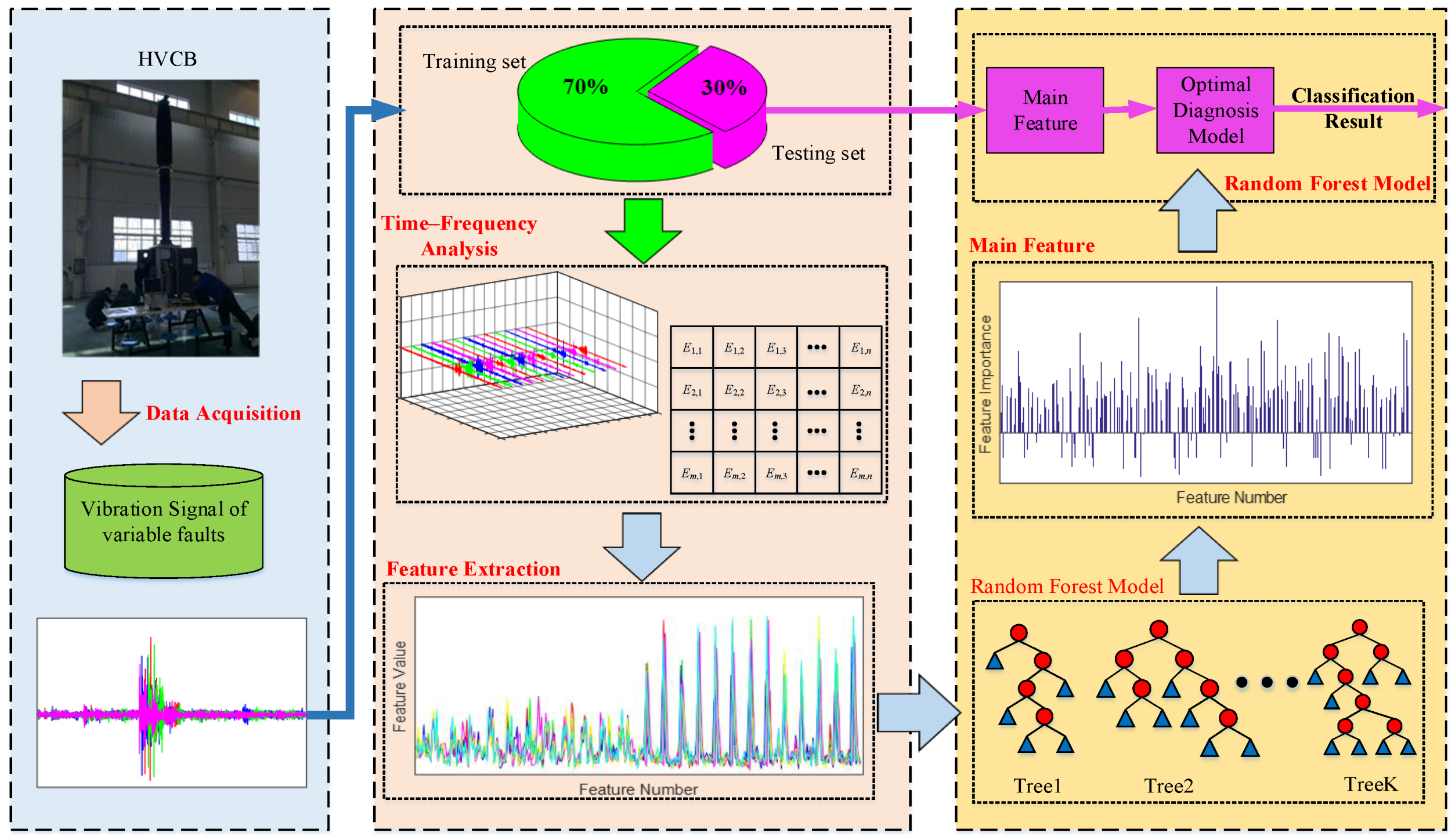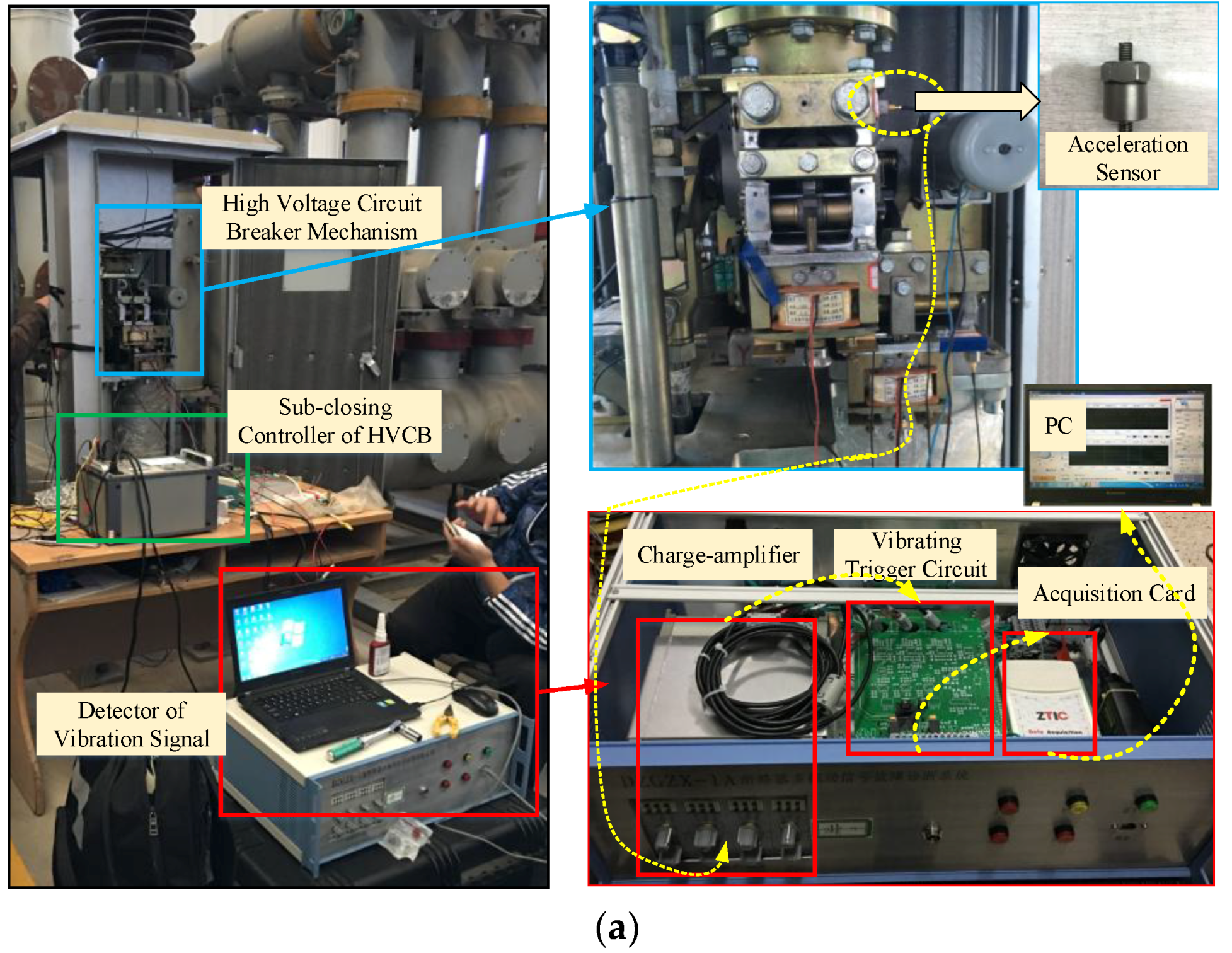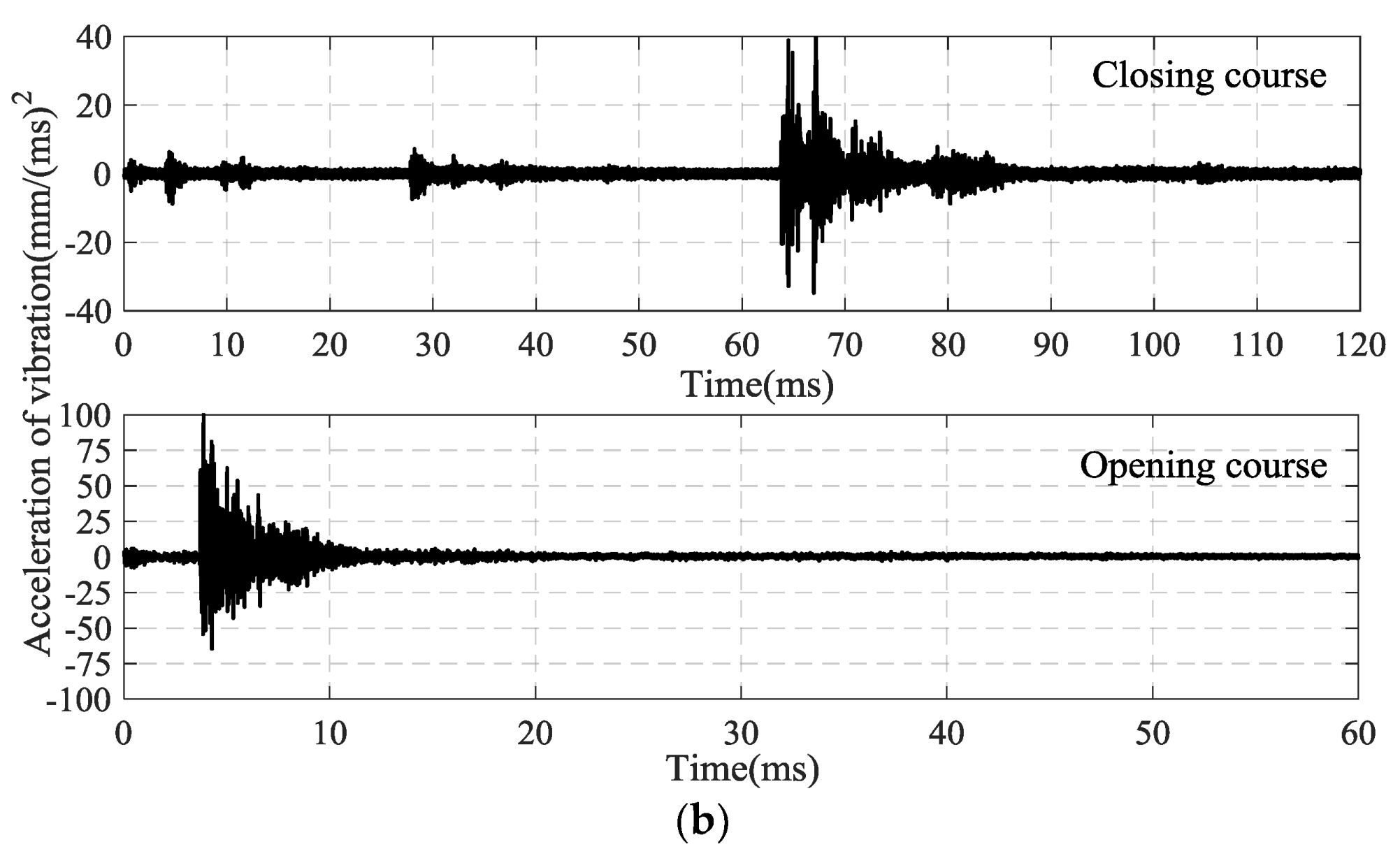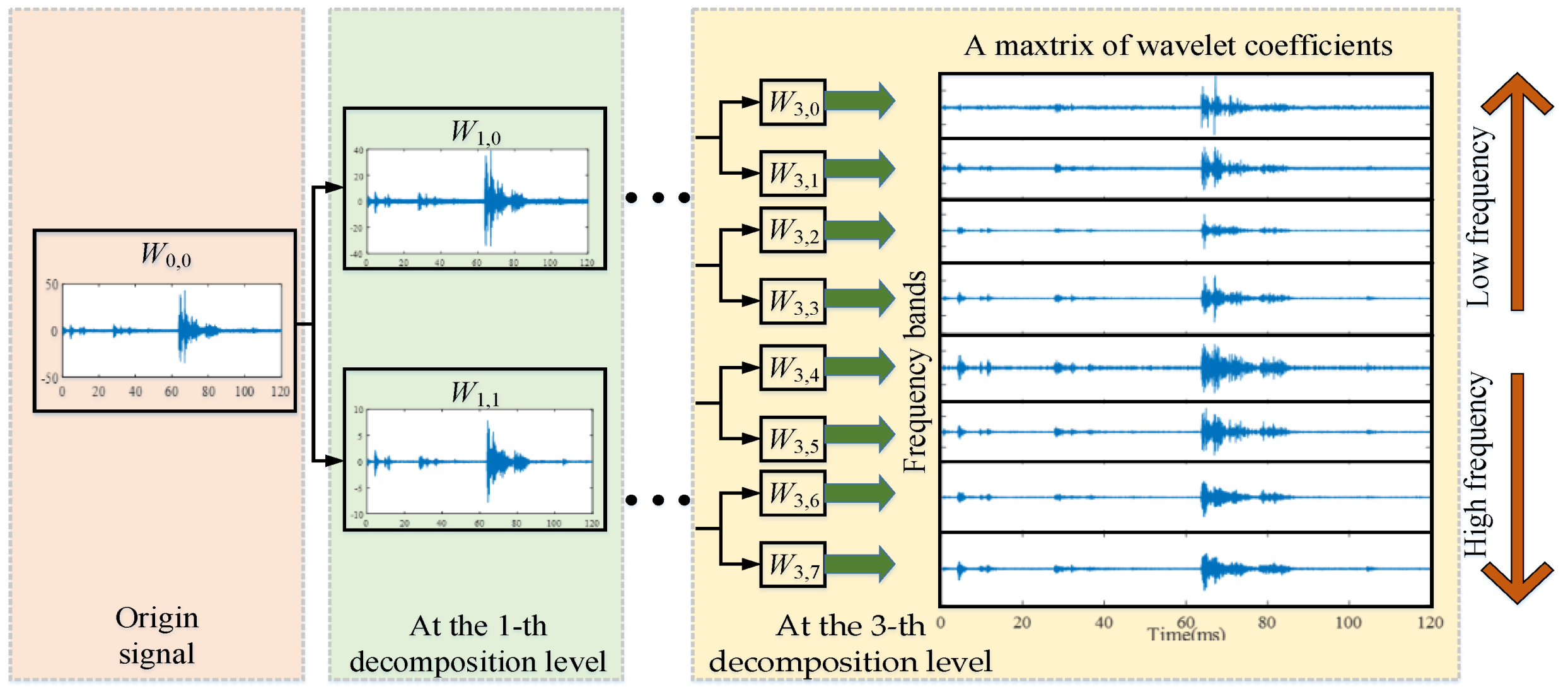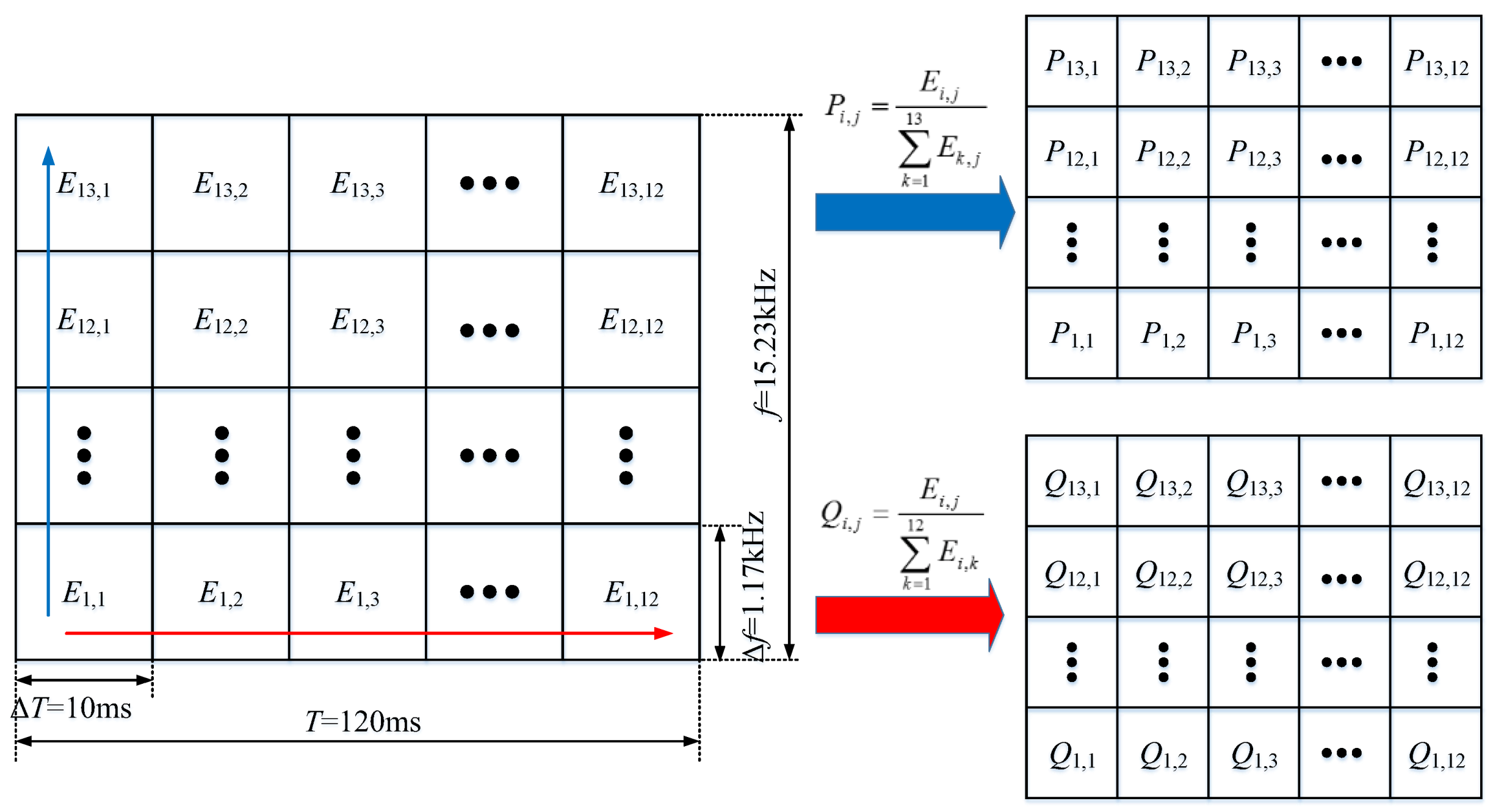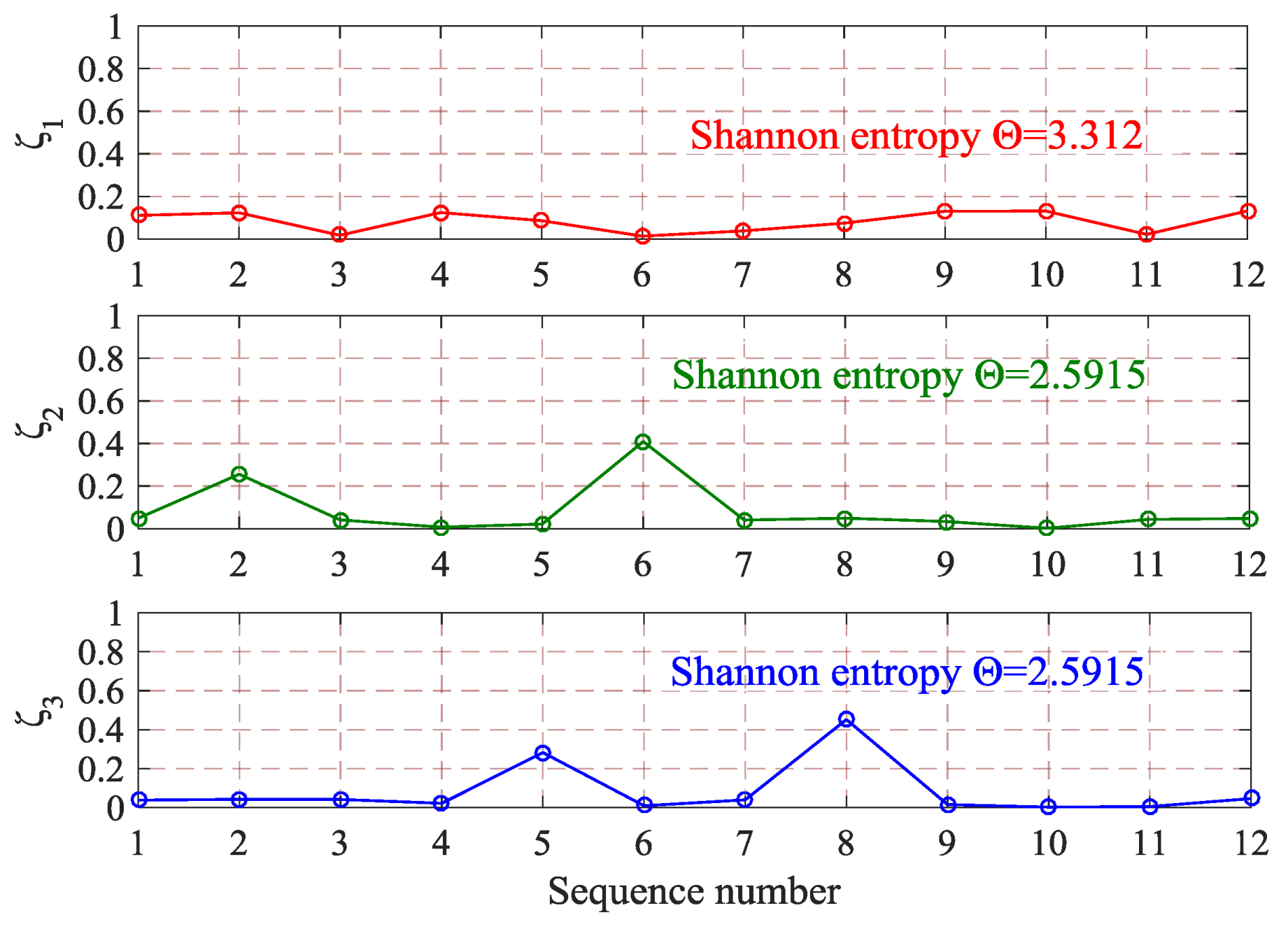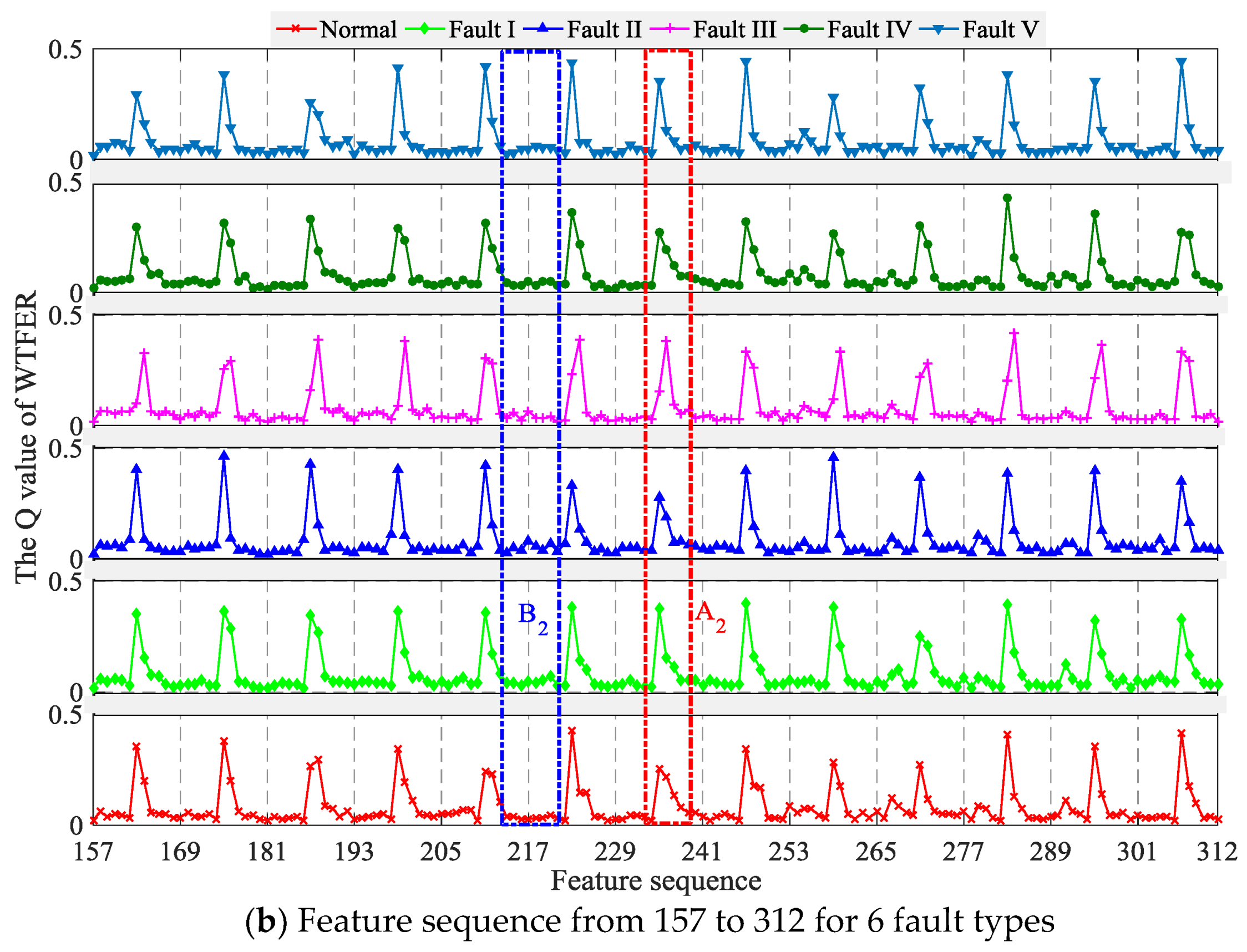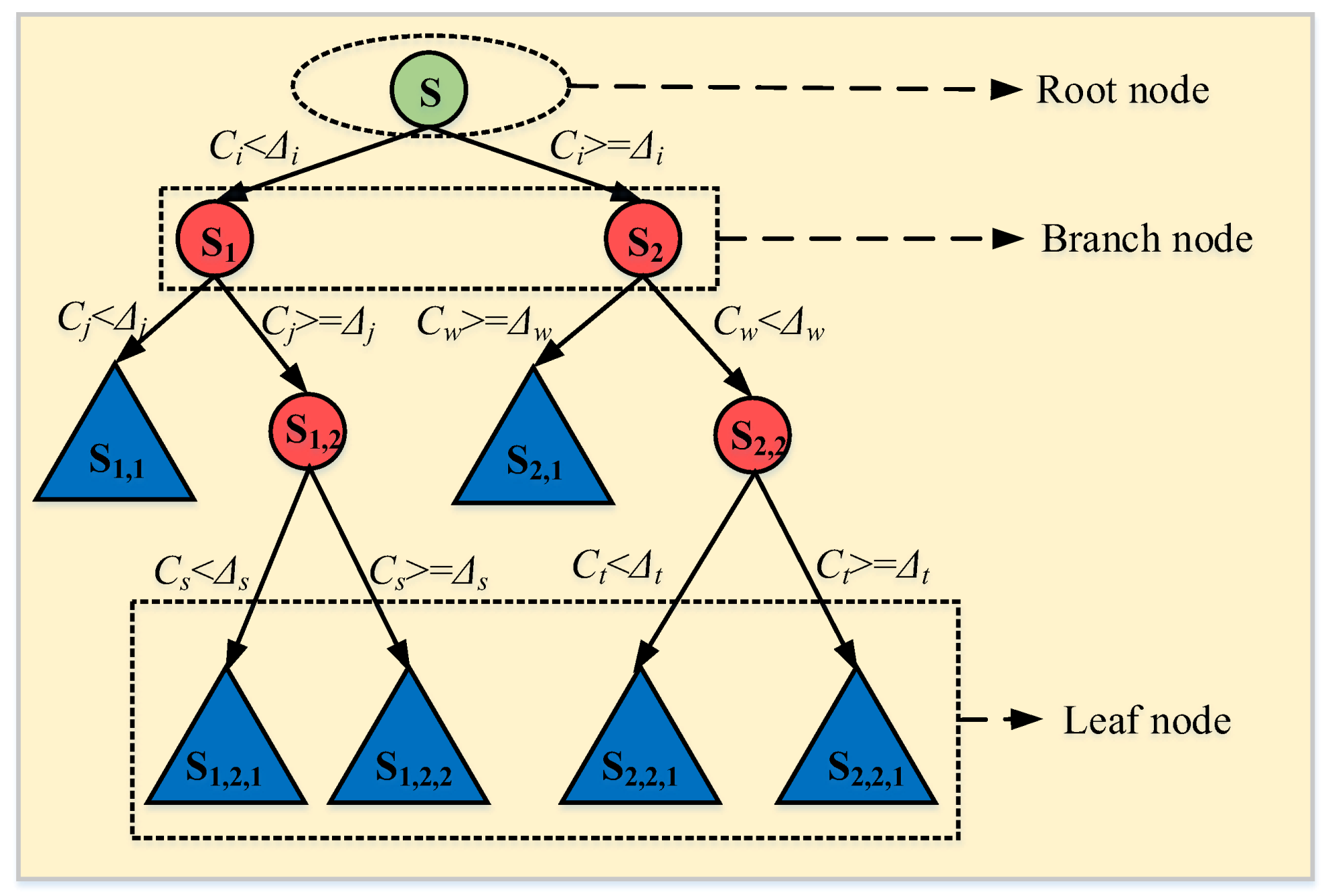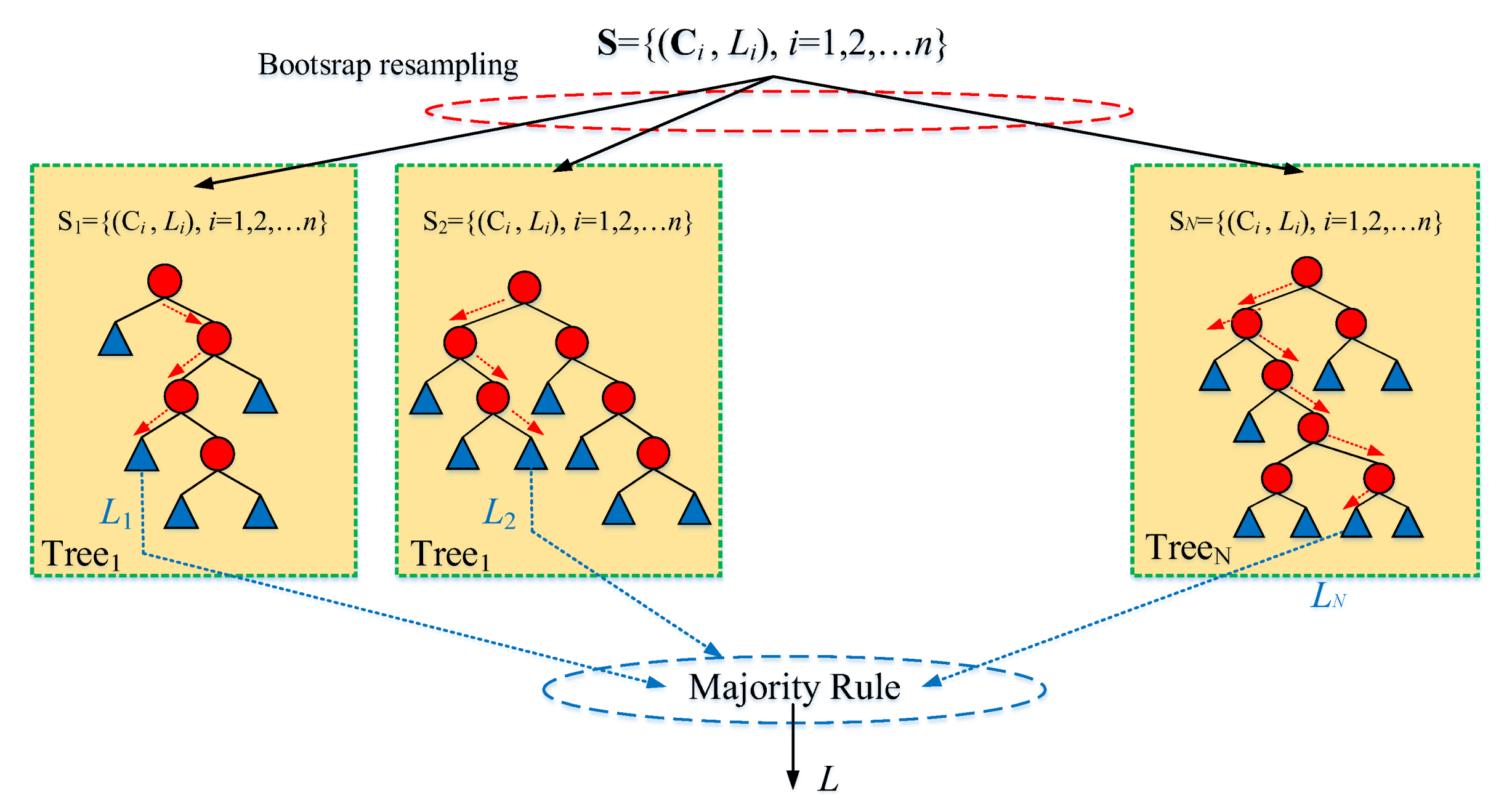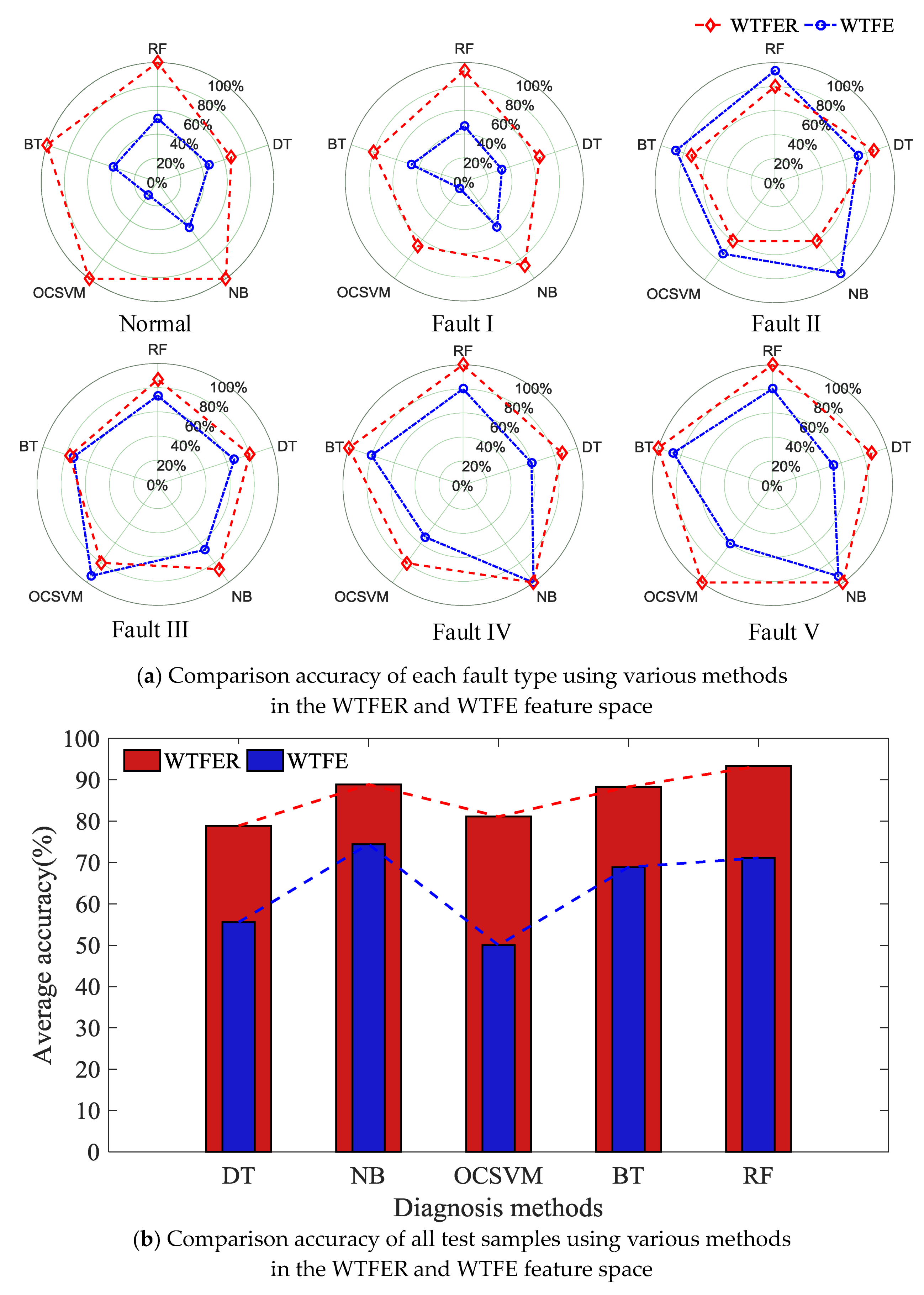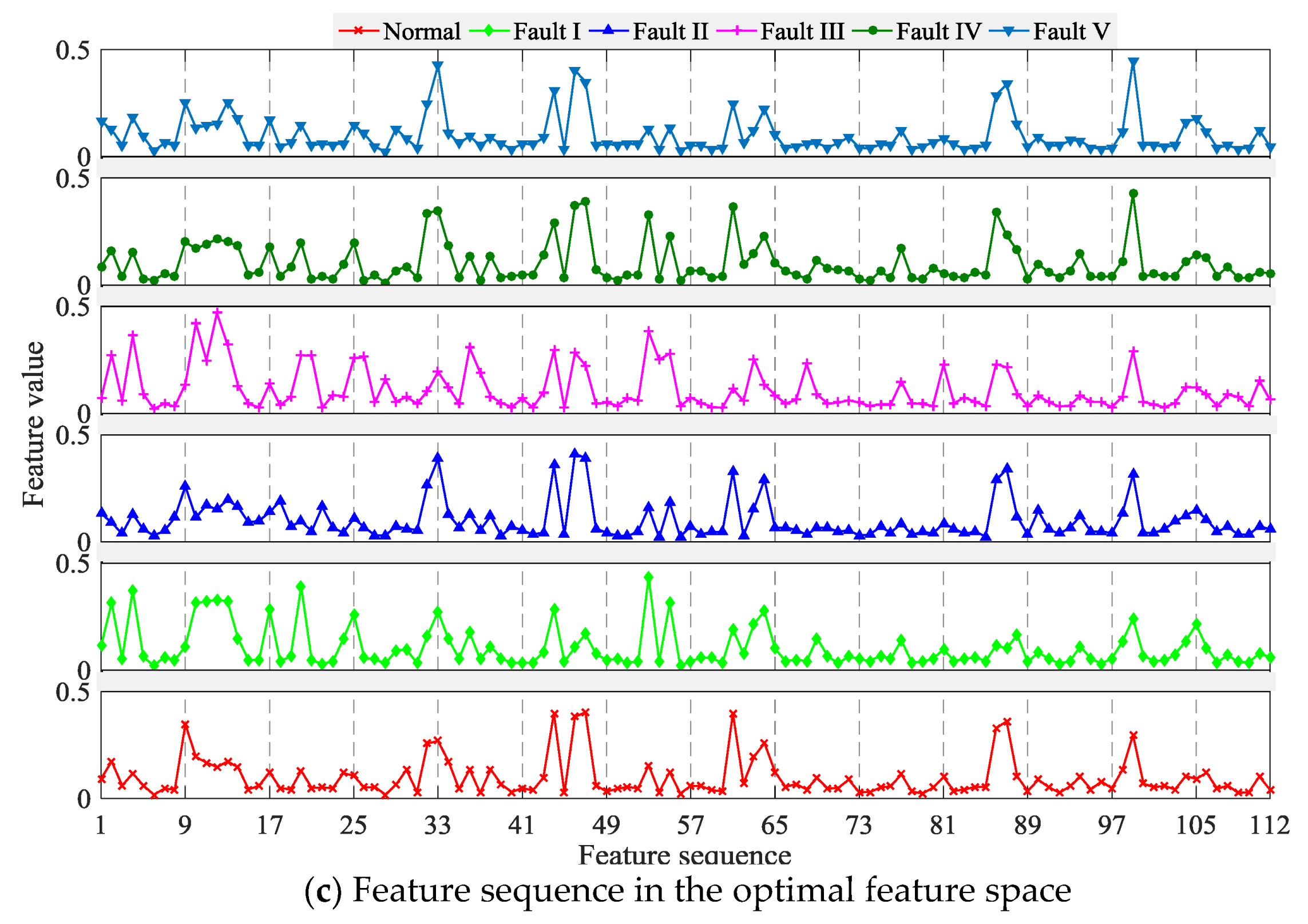1. Introduction
As a piece of control and protection equipment, high-voltage circuit breakers (HVCB) play an important role in the power system. Various research has reported that the mechanical faults of HVCB will give rise to significant harm and outage costs [
1]. Therefore, a handful of researchers have made efforts to analyze failure cause and optimize the structure of HVCB. With the development of machine learning development, intelligent diagnosis technology has been successfully applied in various fields. On this basis, establishing an intelligent identification model for HVCB mechanical fault has become an irresistible trend.
The contact displacement and electromagnet coil current of a closing or opening process have been used as typical information for distinguishing the operation condition of HVCB. For example, Ali Forootani et al. [
2] established a dynamic model using Lagrange’s method, and analyzed the resulting faults in the travel curve. An image matching-based algorithm integrating diamond search strategy was proposed to avoid the deficiencies of conventional travel-time curve measurement. This algorithm has been successfully applied in detection of mechanical properties with extreme learning machines [
3]. On-line hybrid fault diagnosis model based on electromagnet coil current information was also developed [
4,
5]. Recently, a considerable amount of literature has been reported on the vibration characteristics of HVCB [
6,
7,
8]. All this research indicates that the vibration signal of HVCB during operation is non-stationary and non-linear, which is more difficult to capture.
Time-frequency analysis tools have been widely utilized in extracting the fault feature vector of the vibration signal. Developed by Huang et al. in 1998, empirical mode decomposition (EMD) has become one of the most potent time-frequency analysis technologies. Based on the local characteristic time scale of a signal, it can decompose complicated signals into a number of intrinsic mode functions (IMFs) containing the characteristic information of the original signal [
9,
10]. However, the conventional EMD method is subjected to disadvantages such as end effect, high computational complexity and inconformity of decomposition among different signals, spectrum overlapping, and chaotic boundary frequency among different intrinsic modes. Therefore, numerous experts have put forward a series of improved methods, such as local mean decomposition (LMD) [
6], improved ensemble empirical mode decomposition (EEMD) [
11], vibration mode decomposition (VMD) [
12] and so on. These improved approaches can successfully address spectrum confusion problems but are subjected to some other weaknesses. In contrast to the EMD approach, wavelet transform (WT) was proposed as an adjustable windowed Fourier transform with limited energy leakage [
13]. Moreover, WT was extended to wavelet packet transform (WPT) to effectively split the high-frequency band containing rich fault modulation information [
14]. Once wavelet basis function and decomposition scale are determined, the results of wavelet package transform will be the signal under a certain scale, whose frequency components are only related to the sample frequency rather than the signal itself. Obviously, wavelet analysis is not a self-adaptive signal processing method in nature [
9,
12]. Owing to excellent adaptive and multi-resolution capability, WPT is still regarded as a powerful mathematical tool in handling vibration signal in various fields of engineering [
15,
16].
After extracting the feature vector of vibration signal using time-frequency analysis tools, building a high-accuracy and robust classifier becomes a key issue. Hussain et al. designed an expert system consisting of a signal processor module and a factual database module to diagnose the faults of power circuit breakers [
17]. For the case of small sample, support vector machine (SVM) and its improved method have been applied for identifying mechanical faults of HVCBs, and satisfactory diagnostic performance can be achieved [
18,
19,
20]. Along with artificial intelligence technology and meta-heuristic approaches widely applied to control field [
21,
22,
23,
24], a novel method based on particle swarm optimization-support vector domain description and kernel-based fuzzy c-means was proposed for adaptive fault diagnosis of HVCBs under real-time updating of model classification and lack of knowledge acquisition [
25]. In addition, there are masses of categorizers practiced in various scenarios. For instance, decision tree classifiers can diagnose motor fault tasks or detect breast cancer based on medical data [
26,
27,
28]; naive Bayes algorithm has been applied as a fault classifier to investigate the status of a monoblock centrifugal pump or an engine [
29,
30,
31].
Generally speaking, the above literature discusses powerful detectors for diagnosis. Obviously, the training process of a single classifier is affected by global error rate, so the models may be biased towards the majority class and ignore the minority class. Additionally, some abnormal collected samples or the dispersion of the dataset will potentially cause over-fitting [
32]. Ensemble learning, which is common in machine learning, can enhance the performance of identification systems by constructing a set of individuals and weak classifiers and combining them to classify or predict new data with weighted or unweighted voting method [
33]. A novel intelligent method with multivariable ensemble-based SVM was verified by detecting complex faults of different severity levels in the locomotive roller bearings [
34]. Proposed by Breiman [
35] and studied by Biau et al. [
36], the random forest is an improved machine learning algorithm based on random subspace and ensemble learning [
37]. In real industrial environments, it is difficult to acquire a large number of samples for classifier training and estimate the significance of feature candidates for fault diagnosis. Under this circumstance, RF-based models have better performance than other classical classifiers [
38,
39,
40].
In this paper, a new feature indicator integrating wavelet package transform (WPT) was proposed, and the diagnosis model was designed and optimized based on random forest for diagnosing HVCB mechanical faults. Compared with the traditional feature indicators such as wavelet time-frequency entropy as well as general classification methods such as decision tree (DT) [
28], naive Bayes classifier (NB) [
29], one-class support vector machine (OCSVM) [
20] and bagging tree (BT) [
33], the contributions of this paper can be summarized as follows.
- (1)
HVCB mechanical fault is diagnosed by a holistic approach which integrates vibration signal acquisition system, feature extraction based on WPT and optimal classifier with random forest;
- (2)
Through comparing the depicted level of vibration information to that of time-frequency entropy, this paper presents time-frequency wavelet energy rate (WTFER) based on WPT and realizes full-scale description of vibration signal;
- (3)
The importance of feature variable is evaluated using data out of bagging based on ensemble learning. An optimal classifier based on random forest algorithm is designed to diagnose HVCB faults.
The remainder of this paper is organized as follows:
Section 2 presents the procedure of the identification system based on the vibration of HVCB and experiment platform;
Section 3 discusses vibration signal time-frequency feature extraction using wavelet package transform.
Section 4 discusses the establishment of HVCB fault classifier and the optimization of feature space.
Section 5 compares the optimal RF identification model with other traditional diagnosis methods to highlight the advantageous accuracy for optimal RF identification model. Finally,
Section 6 concludes the contributions of this paper.
